The mortality rates and the space-time patterns of John Snow's cholera epidemic map
- PMID: 26081106
- PMCID: PMC4521606
- DOI: 10.1186/s12942-015-0011-y
The mortality rates and the space-time patterns of John Snow's cholera epidemic map
Erratum in
-
Erratum to: The mortality rates and the space-time patterns of John Snow's cholera epidemic map.Int J Health Geogr. 2015 Nov 16;14:34. doi: 10.1186/s12942-015-0016-6. Int J Health Geogr. 2015. PMID: 26572748 Free PMC article. No abstract available.
Abstract
Background: Snow's work on the Broad Street map is widely known as a pioneering example of spatial epidemiology. It lacks, however, two significant attributes required in contemporary analyses of disease incidence: population at risk and the progression of the epidemic over time. Despite this has been repeatedly suggested in the literature, no systematic investigation of these two aspects was previously carried out. Using a series of historical documents, this study constructs own data to revisit Snow's study to examine the mortality rate at each street location and the space-time pattern of the cholera outbreak.
Methods: This study brings together records from a series of historical documents, and prepares own data on the estimated number of residents at each house location as well as the space-time data of the victims, and these are processed in GIS to facilitate the spatial-temporal analysis. Mortality rates and the space-time pattern in the victims' records are explored using Kernel Density Estimation and network-based Scan Statistic, a recently developed method that detects significant concentrations of records such as the date and place of victims with respect to their distance from others along the street network. The results are visualised in a map form using a GIS platform.
Results: Data on mortality rates and space-time distribution of the victims were collected from various sources and were successfully merged and digitised, thus allowing the production of new map outputs and new interpretation of the 1854 cholera outbreak in London, covering more cases than Snow's original report and also adding new insights into their space-time distribution. They confirmed that areas in the immediate vicinity of the Broad Street pump indeed suffered from excessively high mortality rates, which has been suspected for the past 160 years but remained unconfirmed. No distinctive pattern was found in the space-time distribution of victims' locations.
Conclusions: The high mortality rates identified around the Broad Street pump are consistent with Snow's theory about cholera being transmitted through contaminated water. The absence of a clear space-time pattern also indicates the water-bourne, rather than the then popular belief of air bourne, nature of cholera. The GIS data constructed in this study has an academic value and would cater for further research on Snow's map.
Figures
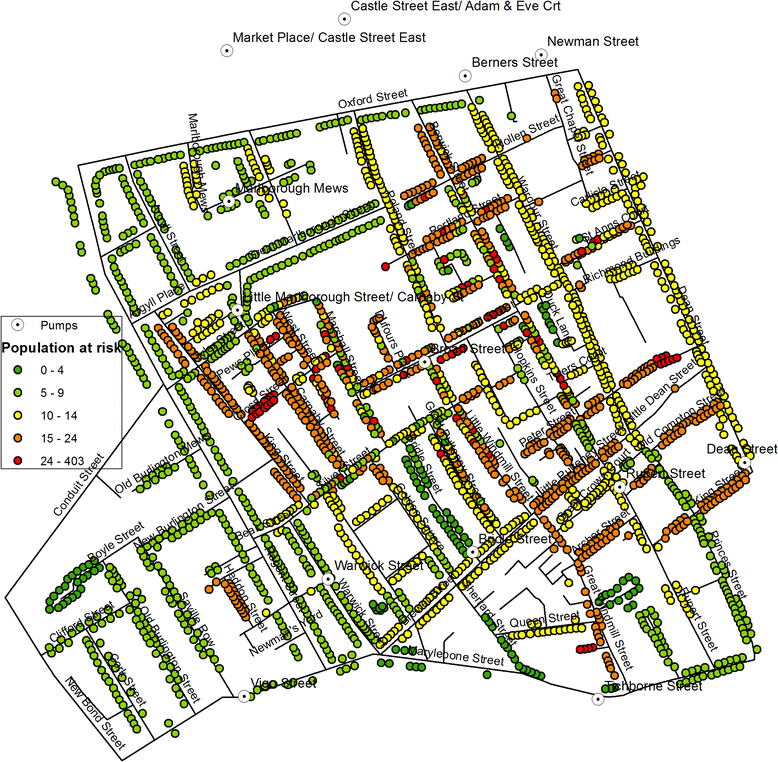
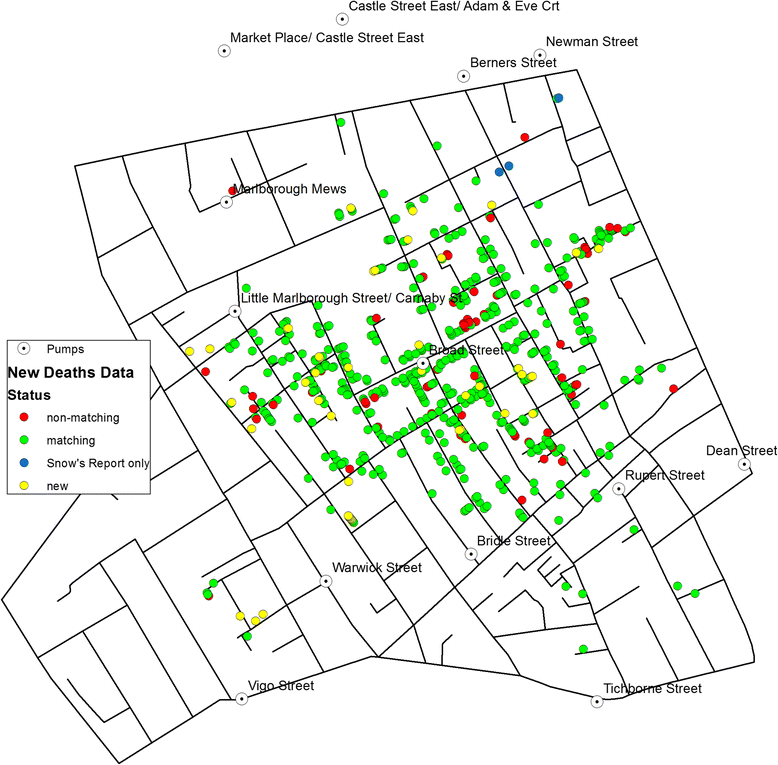

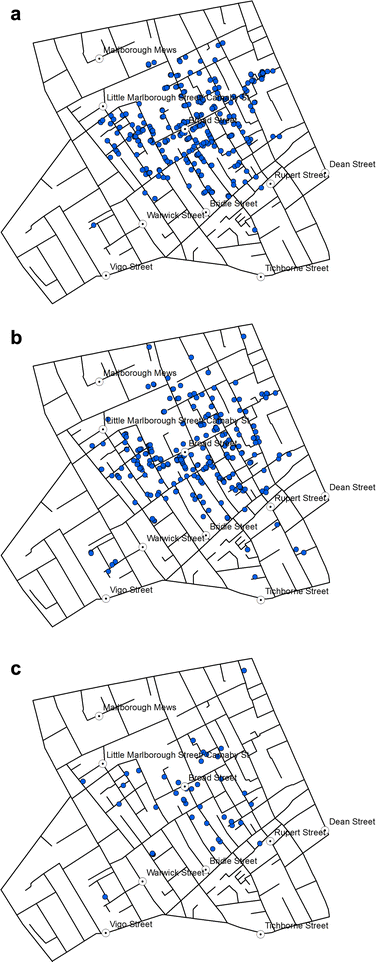
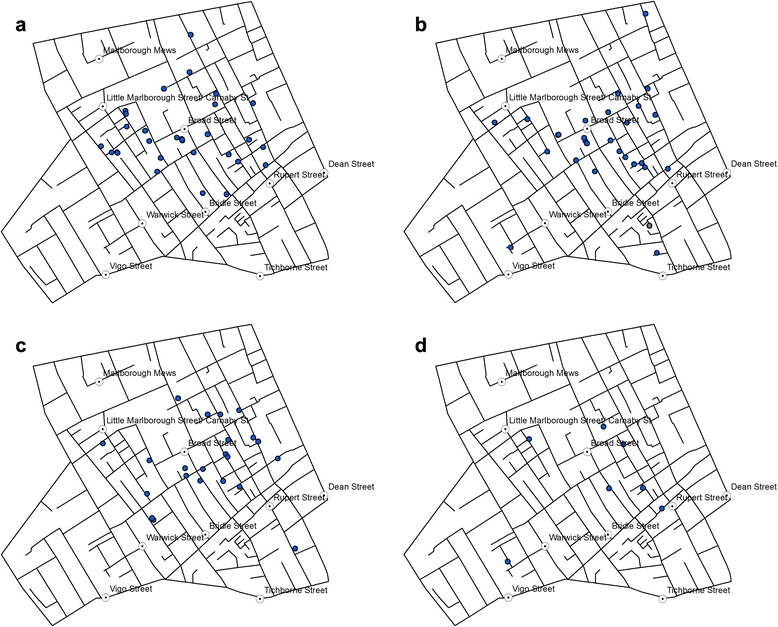
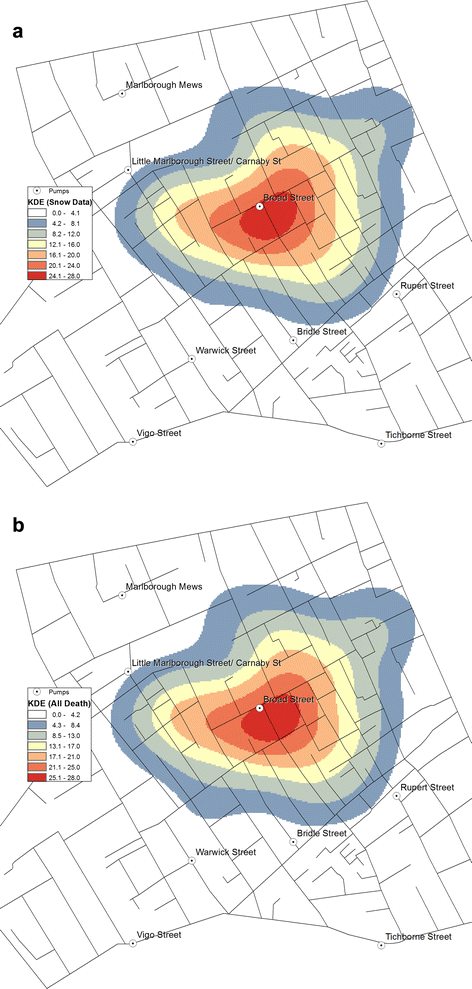
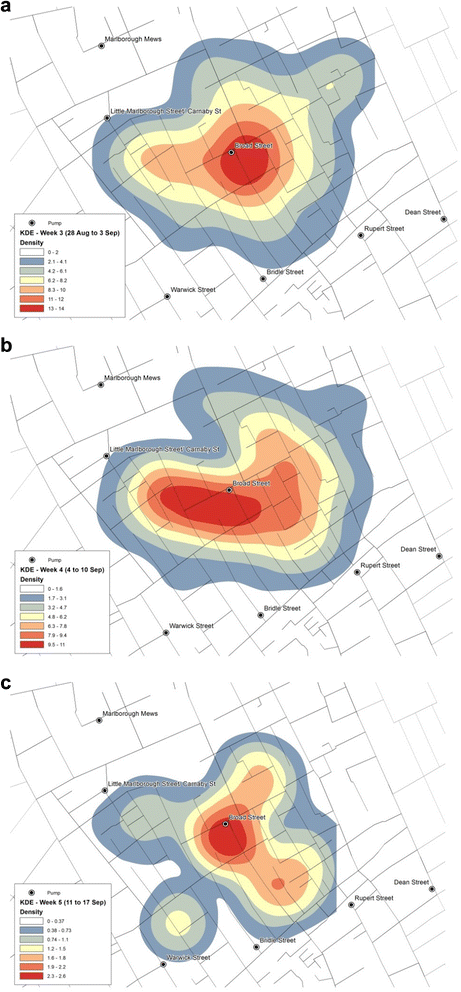
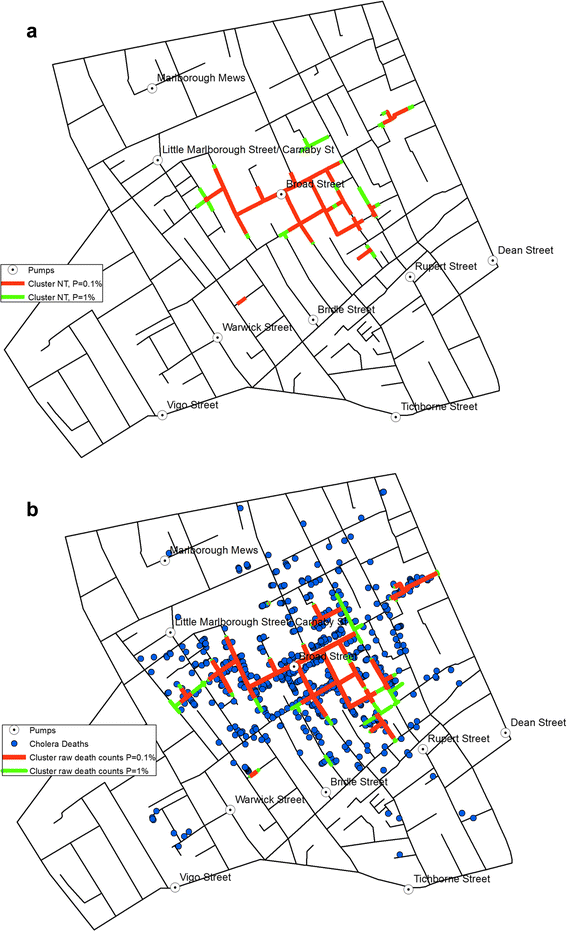
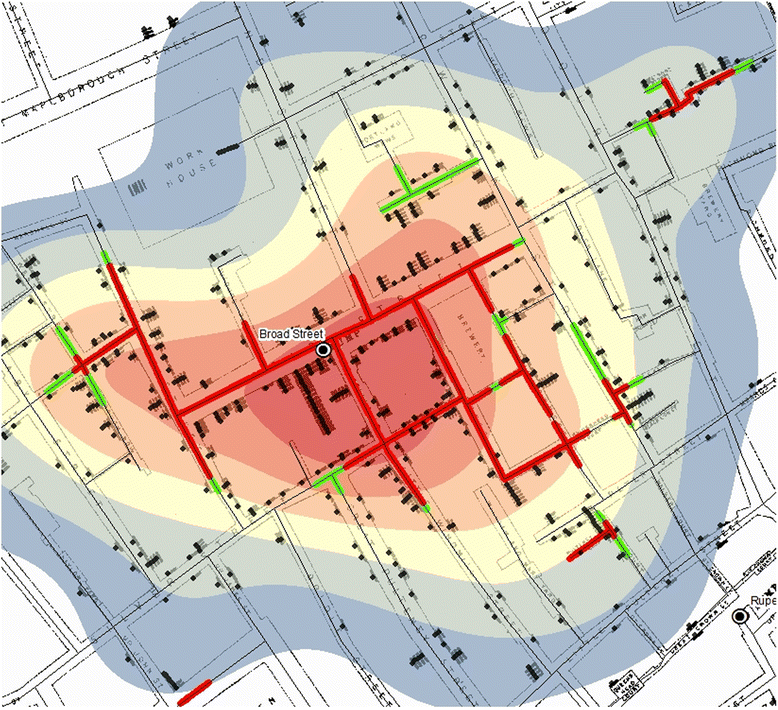
References
-
- Snow J. On the mode of communication of cholera. 2. London: John Churchill; 1855.
-
- Koch T. Disease maps: epidemics on the ground. Chicago: University of Chicago Press; 2011.
-
- Vinten-Johansen P, et al. Cholera, chloroform, and the science of medicine: a life of John Snow. Oxford: Oxford University Press; 2003.
-
- Koch T. Cartographies of disease: maps, mapping, and medicine. Redlands, CA: ESRI Press; 2005.
Publication types
MeSH terms
LinkOut - more resources
Full Text Sources
Other Literature Sources
Medical
Miscellaneous

